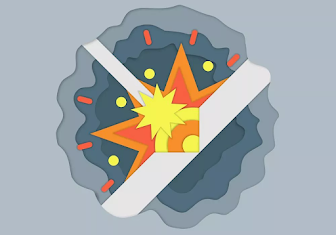Lasers in the Plastic Industry
Christopher Ogden, founder of Laser Partners UK Limited, based in Sheffield, explores the plastic industry’s hesitancy to introduce laser technology and why it could be something to consider.
Key Highlights:
The adoption of industrial laser technology has surged since the 1970s, offering multiple applications in the plastics industry including marking, welding, cutting, de-gating, cleaning, and surface texturing.
Laser marking allows for fast and precise marking on plastic surfaces, while laser cutting and de-gating offer clean edges without mechanical wear.
Laser cleaning presents a promising avenue for industrial cleaning, offering fast and consistent results without damaging the underlying material.
Growth in Industrial Laser Uptake
The uptake of industrial laser processing since its inception into the mainstream industry in the 1970s has been nothing short of phenomenal, with $5.7BN worth of lasers sold in 2018 and a prediction that this will increase to $14.5BN by 2026.
So, what can laser technology offer the plastics industry? In summary, quite a lot.
Here’s a brief list of the laser process options available today:
Laser Marking
Laser Plastic Welding
Laser De-Gating
Laser Cleaning
Laser Cutting
Laser Drilling
Laser Micro-Machining
Surface Stripping
Surface Texturing
Probably the most popular and widely used of these technologies is Laser Marking – where laser systems with different wavelengths can be used to mark almost all plastic materials. Fast marking times of just a few seconds are achieved for most basic marking applications. Companies typically use laser marking systems to mark company logos, part numbers, date codes, serial numbers and machine-readable codes such as 1D barcodes and 2D barcodes such as QR and DataMatrix.
‘The wide range of plastic materials and their different colour additives and glass fibre content can make it difficult to mark some materials with a high contrast mark. But by using the right laser technology, almost all of these can be marked with a really good quality mark - whether the plastic is dark, light or colourless,’ stated Masahide Okano from laser system supplier Datalogic.
Laser Plastic Cutting and De-gating
Expand
Laser Partners
Most people are aware of laser cutting for steel-based applications, but using longer wavelength CO2 lasers also gives good results on thermoplastics. ‘With the right setup and laser parameters a cut edge with little or no discolouration can be achieved on most plastics, and on plastic material thicknesses of up to 25mm. With less dense materials thicker sections can also be cut’, states Lee Popplewell of Luxinar - a UK-based company specialising in CO2 laser technology, based in Hull.
CO2 laser technology creates a long wavelength of 10.6µm, by electrically charging gas contained within a sealed tube. Mirrors and lenses allow the system to build up sufficient power that can then be focused to perform different tasks. The longer CO2 laser wavelength means that it is readily absorbed by most polymers. Acrylic is one material where a neat, almost polished edge quality, is generally achieved, and many other materials will also give excellent results. With laser de-gating, the simple application of laser cutting eliminates the need for mechanical cutting blades, that eventually wear and require scheduled maintenance. As with many laser processes, there is no mechanical load resulting from the laser beam, so parts don’t need to be clamped in position for laser processing.
Laser Mould Tool Repair
Expand
Laser Partners
Laser welding is used for the repair of steel injection mould tools, with many tool makers using laser welding with filler wires to repair worn edges, cracks and fractures on mould tools, to extend the life of mould tools.
These systems are surprisingly simple to use with filler wire options available for most steel grades, including wires that leave a hardened deposit.
The use of pulsed laser technology, with a low flow rate shield gas, means that thermal damage and discolouration of the repaired surface is minimised, with results vastly superior to conventional welding processes, although deposit rates with laser welding are typically quite low.
Plastic Laser Welding
A less well-known process is the use of lasers for ‘laser plastic welding’. Techniques are different to metal welding and this technology is not suited to all plastics and part designs, so careful consideration needs to be taken. A common approach is to use two different plastics (sandwiched together), one that’s absorbent to laser and one that is not. By focusing the laser beam through the non-absorbent plastic, the underlying absorbent plastic will then melt forming a welded seal between the two plastics. This can be a fast and effective process if material selection and part geometry is carefully considered at the design stage.
Tumblr : https://x-i.me/weltwt
Twitter : https://x-i.me/weltut
Facebook : https://x-i.me/welfb
#ScienceFather#ResearcherAward#LaserTechnology,#PlasticIndustry,#IndustrialLaser,#PlasticManufacturing,#LaserCutting,#LaserWelding,#LaserEngraving,#PlasticProcessing

Comments
Post a Comment